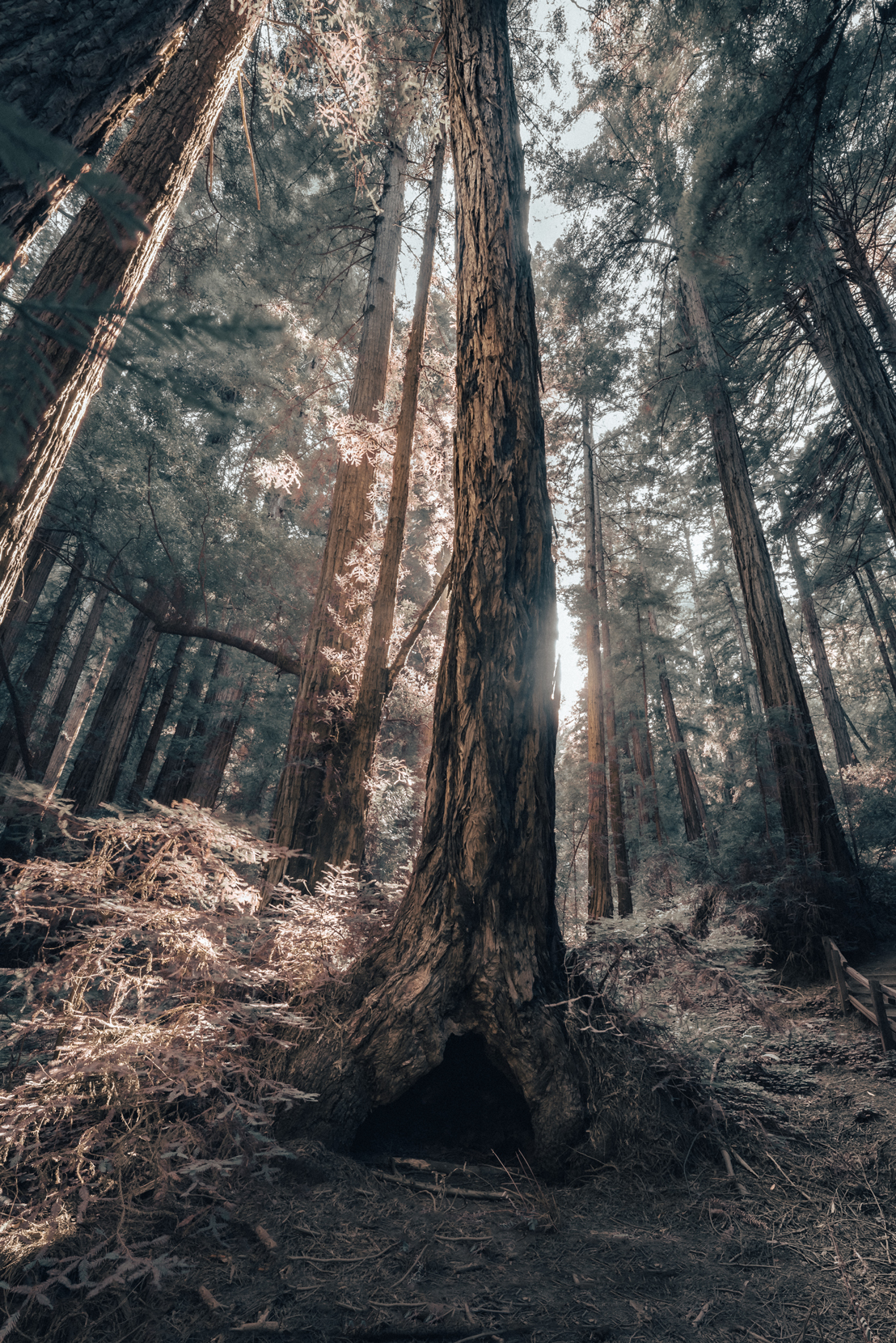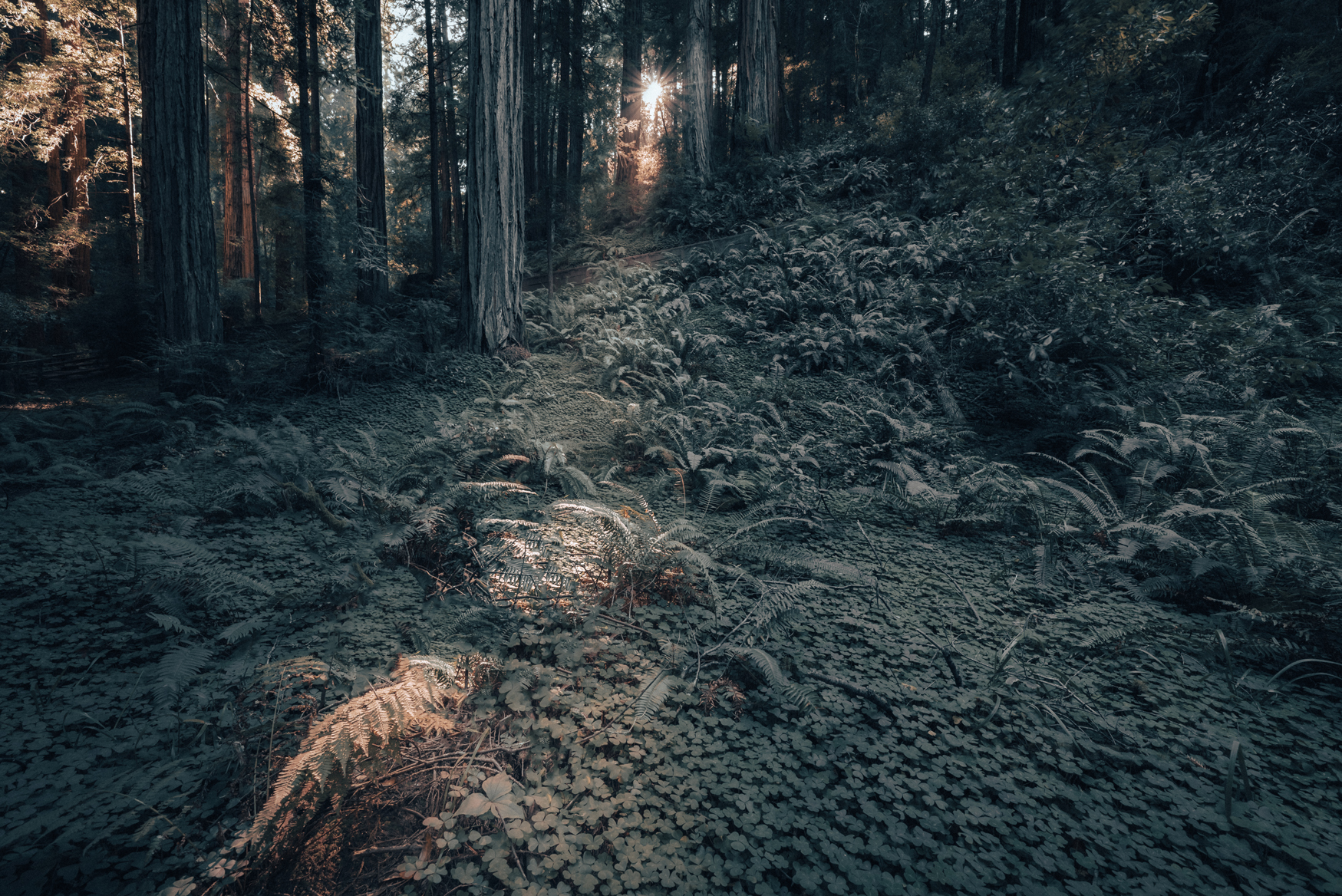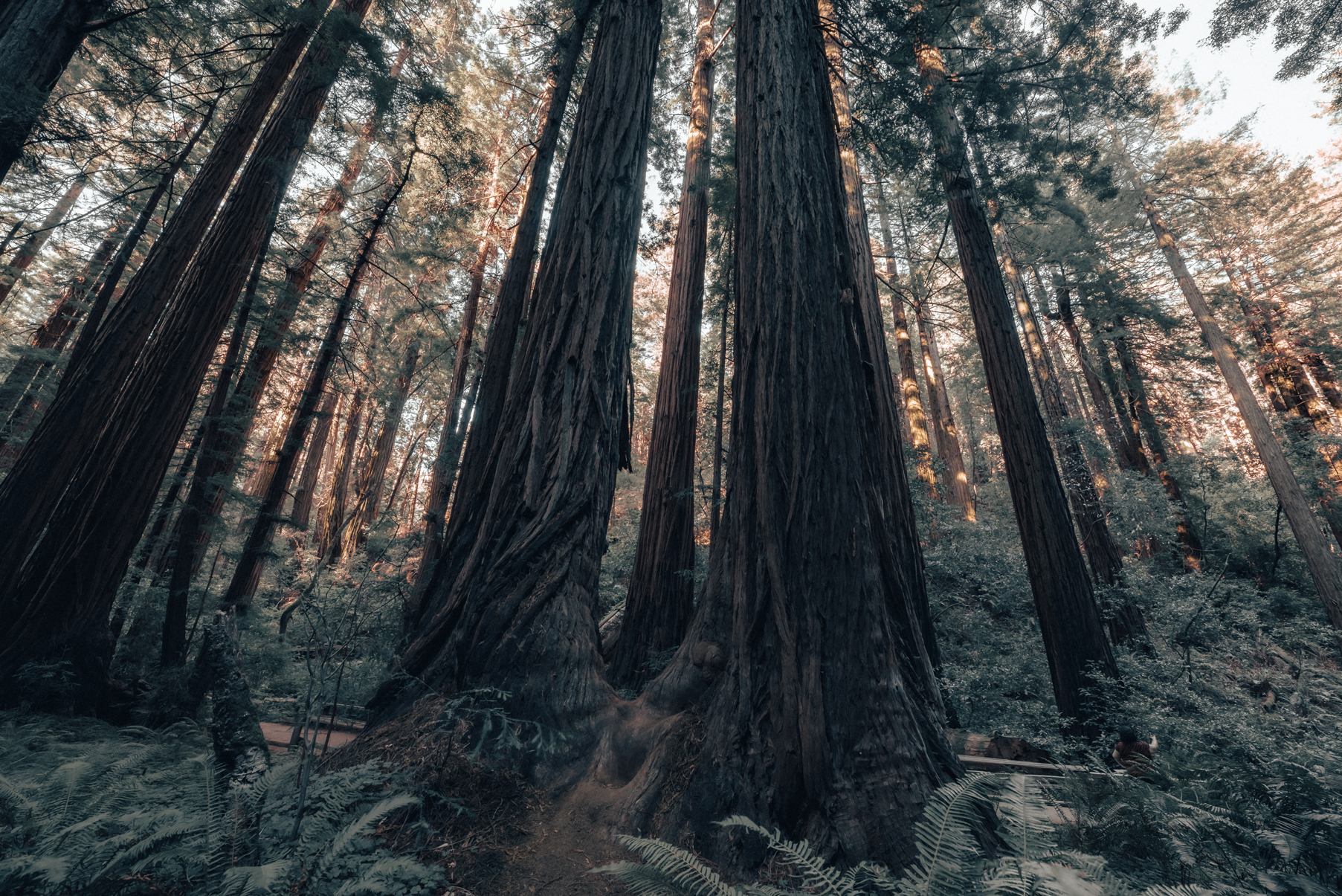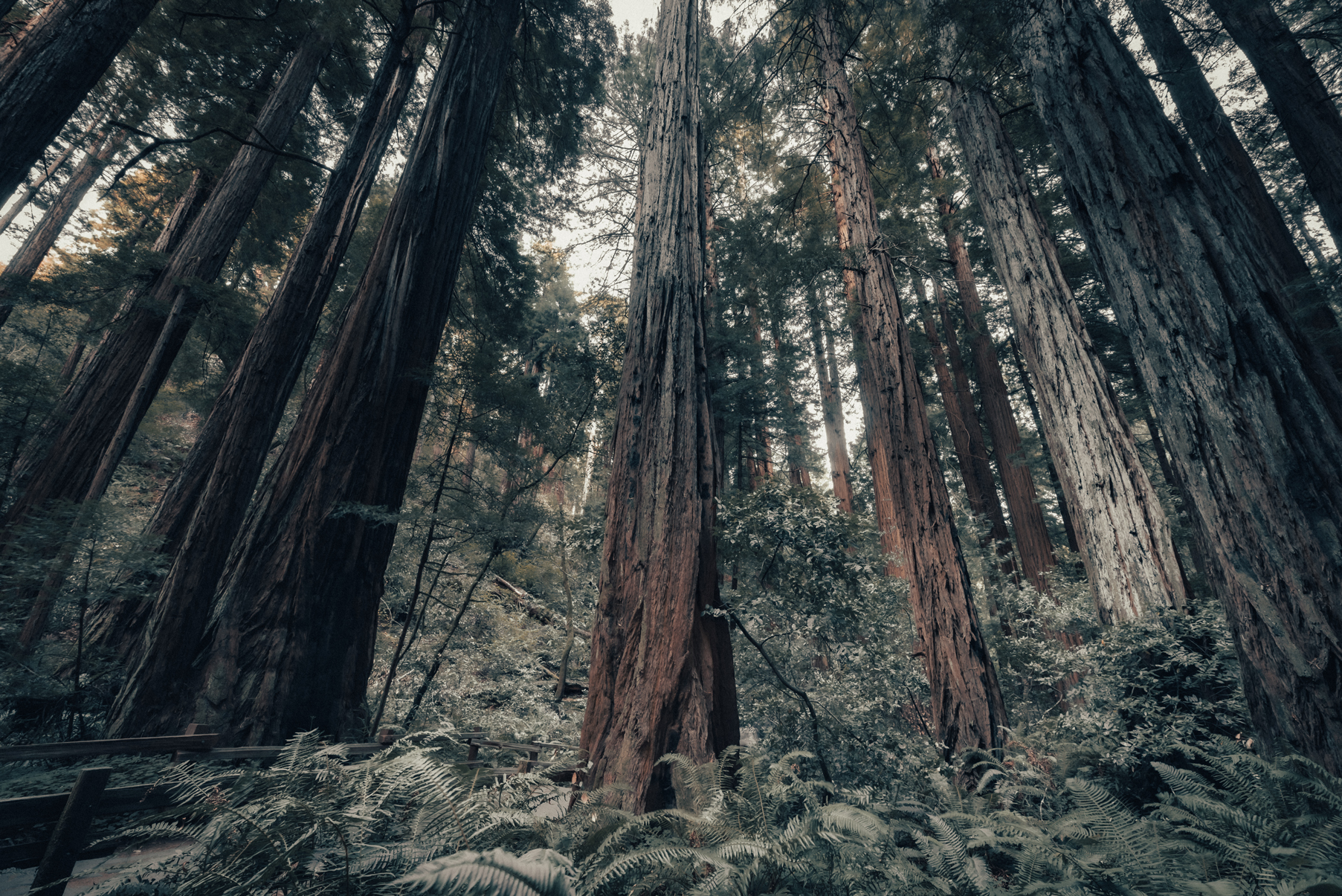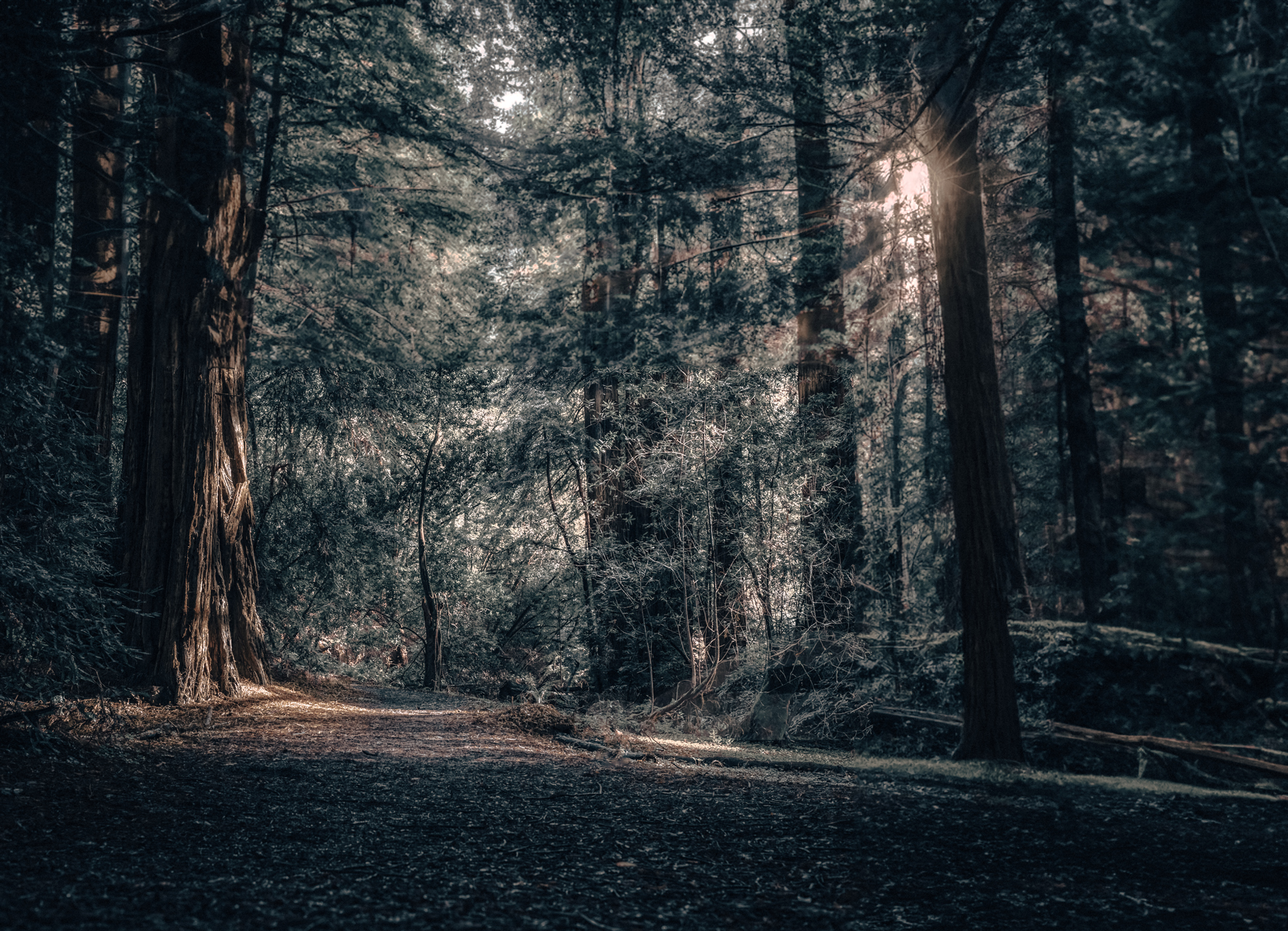
A Living Legacy of John Muir
The park owes its name—and existence—to the great naturalist John Muir, who inspired a nation to see forests not as timber to be felled, but as temples to be revered. Muir once wrote, “In every walk with nature, one receives far more than he seeks.” His words linger in the rustling leaves and echo in the quiet footsteps of visitors tracing paths beneath trees that predate the birth of cities, nations, and entire civilizations.
In 1908, President Theodore Roosevelt proclaimed the land a national monument, honoring Muir’s vision to protect these giants forever. To wander here is to step into his dream—an unbroken thread of wilderness preserved for generations yet to come.
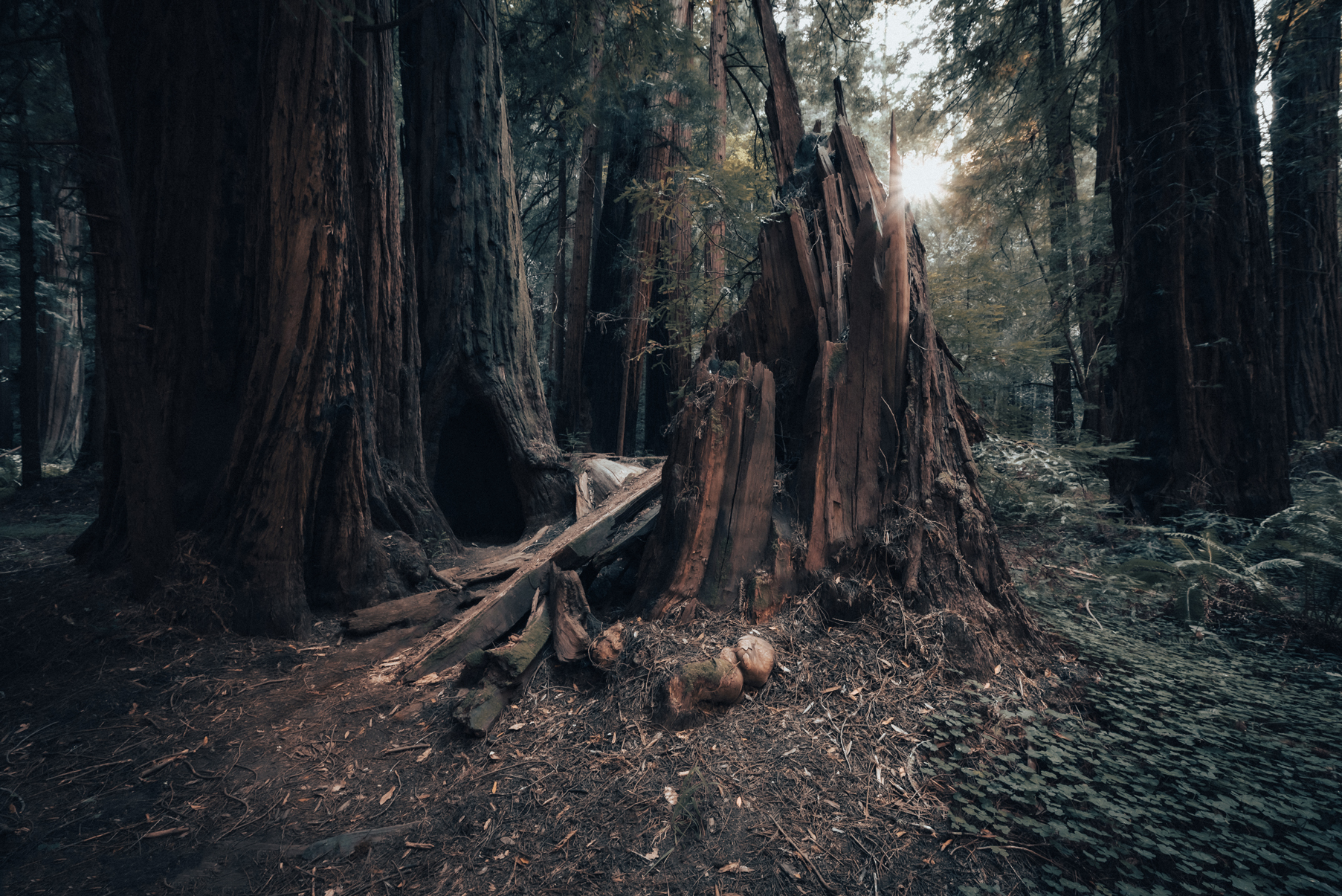
Giants Older Than Time
The coastal redwoods (Sequoia sempervirens) that dominate Muir Woods are the tallest trees on Earth. Many soar beyond 250 feet, their trunks wide enough to swallow a city car. Some are over 1,000 years old, silent witnesses to the rise and fall of empires, the sweep of history, and the fragile brevity of human lives.
Walking among them is humbling, almost disorienting—scale becomes irrelevant, time collapses, and every breath is infused with a sense of awe. It is no surprise that Muir himself described redwoods as “cathedrals, grander than any built by the hand of man.”
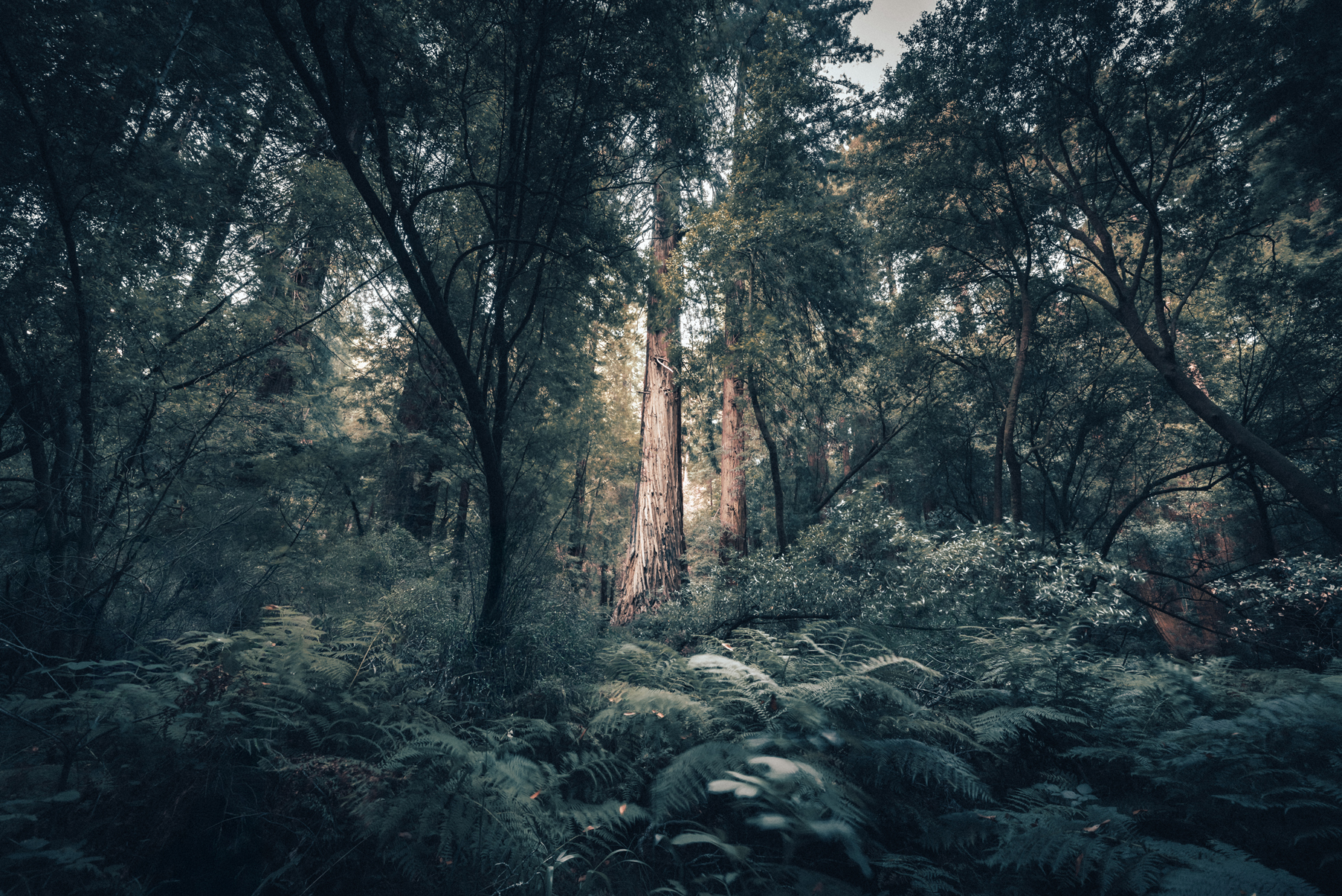
Why Preservation Matters
Muir Woods is not just a park; it is a reminder of what the world once looked like, before cities spread across valleys and skylines replaced treetops. Once, redwood forests blanketed more than two million acres of California. Today, less than five percent of those ancient groves remain.
To preserve them is not only to safeguard beauty, but to protect biodiversity, carbon-storing ecosystems, and a spiritual refuge for weary souls. As Muir wrote, “The clearest way into the Universe is through a forest wilderness.”




